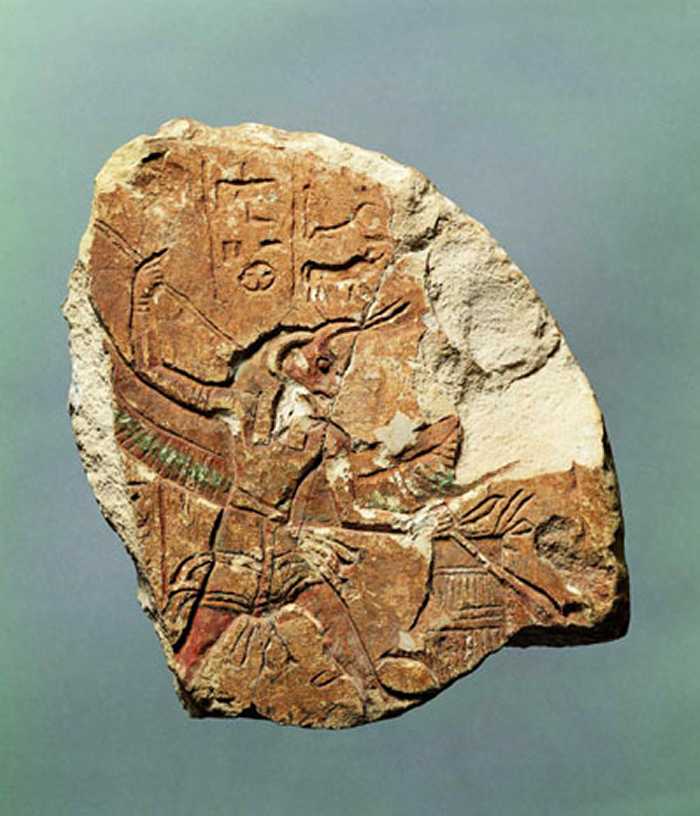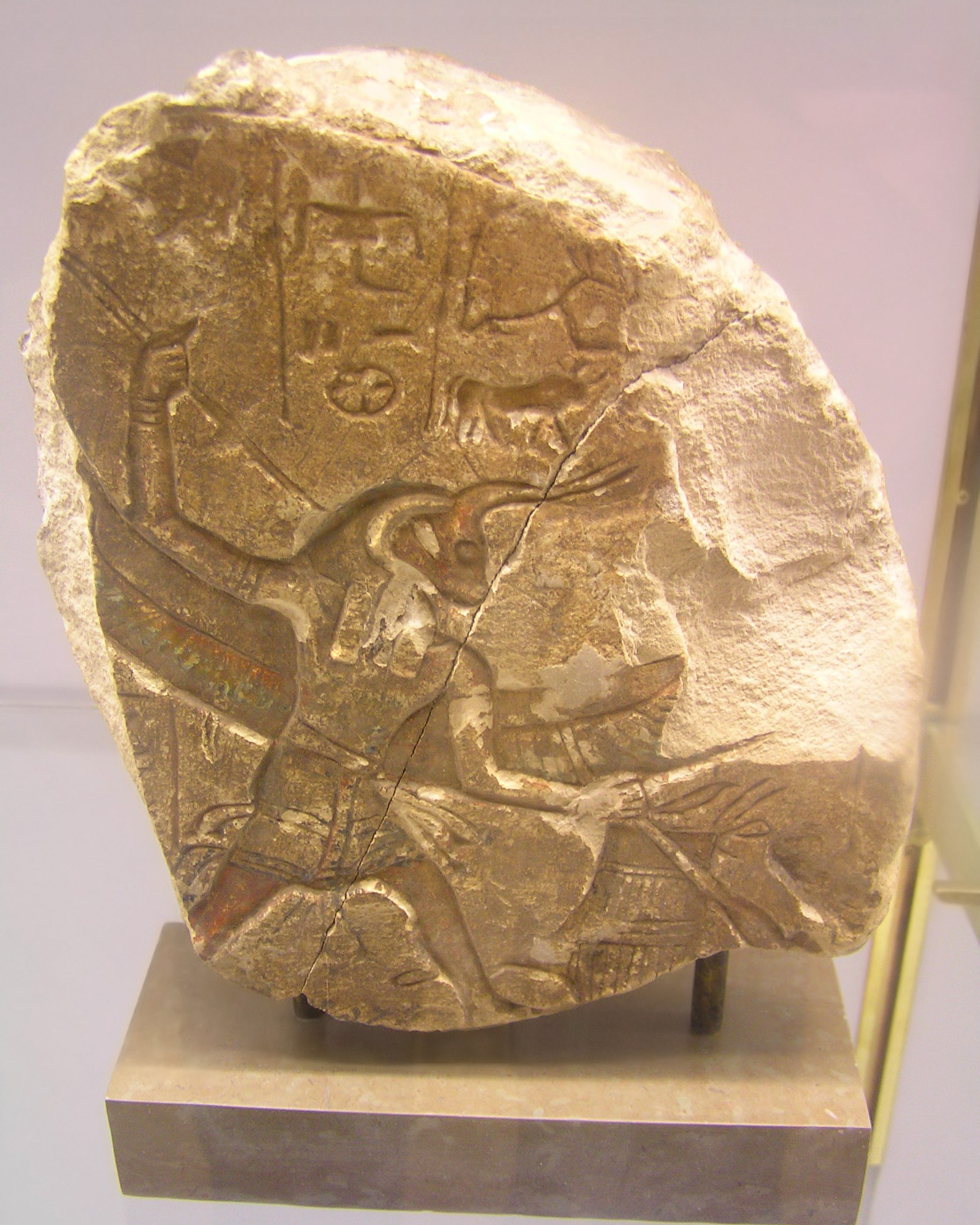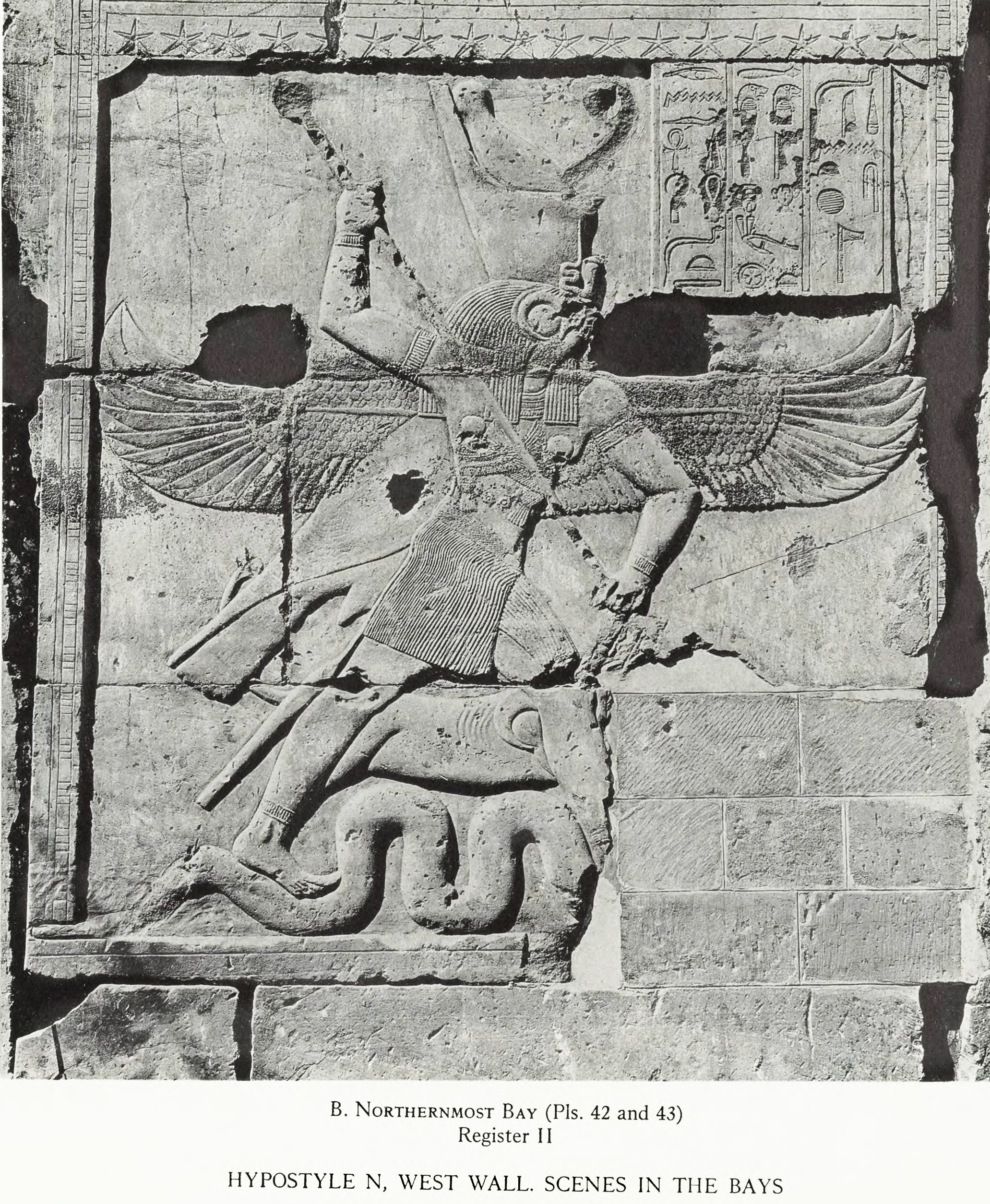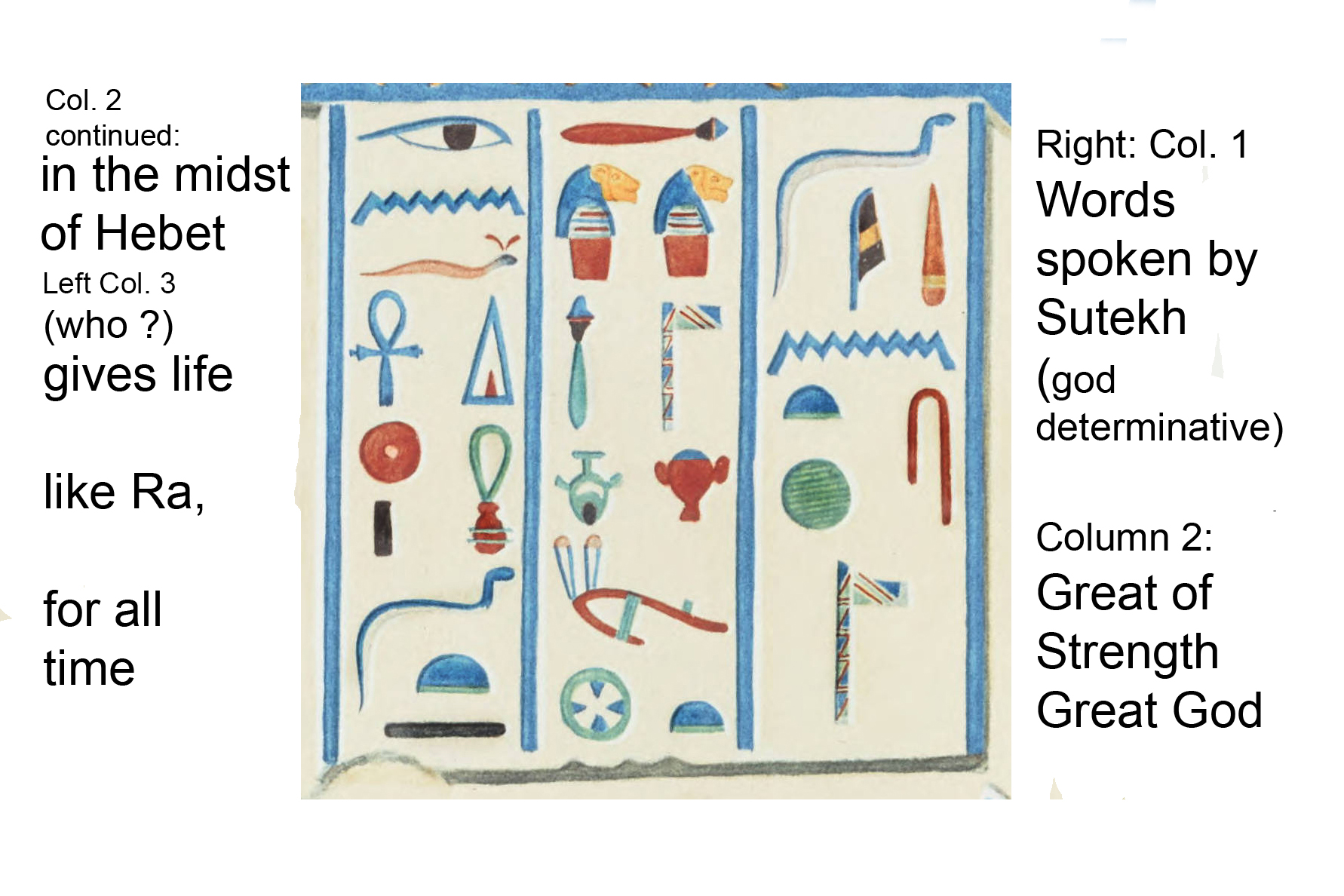
Photo ©NCG: Ny Carlsberg Glyptotek ÆIN 726, Acquired 1890
Type of work: Stela, Limestone, H. 22 cm.
Period: New Kingdom, 18th-20th Dynasty (1550-1080 B.C.) most likely range 1305 BC.-1196 BC.

Photo ©NCG: Ny Carlsberg Glyptotek ÆIN 726, Acquired 1890
Type of work: Stela, Limestone, H. 22 cm.
Period: New Kingdom, 18th-20th Dynasty (1550-1080 B.C.) most likely range 1305 BC.-1196 BC.
|
A Griffith Institute pdf gives a description: "Upper right part of round-topped stela, bull-headed winged Seth ‘bull of Ombos’ in barque spearing [Apophis], Dyn. XIX, in Copenhagen, Ny Carlsberg Glyptotek, Æ.I.N. 726." Here are photos of the 'Bull of Ombos' in situ at the museum:
 Photo © Bo Christiansen
Just under the Set animal hieroglyph (center, top), we see a bull. The tasseled kilt is Canaanite in origin. Seti I's tomb has an example, among other ethnic groups, "They include, left to right: Mizraim, ruddy-skinned Egyptians; Canaan, bearded Canaanites; and", [via Lepsius]", Cush, swarthy Nubians; and Put, richly-robed Libyans." (_Genesis: World of Myths and Patriarchs_, by Feyerick, Gordon and Sarna, page 76) Lepsius' original color illustration, which I adapted to B/W, shows the Canaanite with red hair and a brightly colored striped and tasseled kilt. The Egyptian kilt is plain in comparison. The other illustration shows a winged deity in the same pose as in the Glyptotek stela fragment.
"The incised depiction of a god who holds a great lance over his head with both hands, ... should be interpreted as a figure that combines the Canaanite Baal
(who defeats the sea serpent litanu/Leviathan) and the Egyptian Seth (who conquers the Apophis serpent". "The same Baal-Seth, this time furnished
with wings (in the Egyptian style) and armed with a lance, overpowers the horned snake on a Ramesside level scarab from Tell el-Far'ah (south)(illus. 87b). By
means of the combination of Baal and Seth as serpent conquerors, the serpent, an Egyptian symbol of the danger in the dark of night and a Canaanite symbol of
the stormy sea, became a symbol of danger in general. The god who could defeat such a creature is treated as a savior, pure and simple". (_Gods, Goddesses,
and Images of God in Ancient Israel_, by Othmar Keel and Christoph Uehlinger, pages 76-78)
Set is winged, as he is in the temple of Amun at Hibis:
 From The Temple of Hibis in El Khargeh oasis : Part III, the decoration, Publications of the Metropolitan Museum of Art Egyptian Expedition, v. 17, by Davies, Norman de Garis, 1865-1941
 Going Right to Left: "Words spoken by Sutekh (god determinative), Great of Strength, Great God in the Midst of Hebet (who?) gives life like Ra for all time". Here is some more recent photos. Repairs have been done since Davis' old image:
 A picture by "risotto al caviale".
We have another example of the winged Set with spear:
"The Greater Dakhla Stela thus points at Amheida's close relations with the temple of Seth at Mut el-Kharab from an early date. Later in the Third Intermediate Period, the local governor during the reign of Takeloth III supplied the temple of Thoth with a small but regular endowment. In the reign of Piye, the same governor did the same for the temple of Seth. For both donations, the commemorative stelae erected have been preserved.14 The temple of Amasis was decorated with a large image of the god Seth of Mut, thereby demonstrating the importance of this god also for the town of Amheida. A large stela from the Ptolemaic or Roman period (Fig. 15) showing the same image was also found at the site." AN OASIS CITY, Chapter 1 Amheida in Its Surroundings, The sacred landscape, by Olaf E. Kaper. Quote source: http://dlib.nyu.edu/awdl/isaw/oasis-city/chapter1.xhtml ©2015 Institute for the Study of the Ancient World, NYU Press
|


